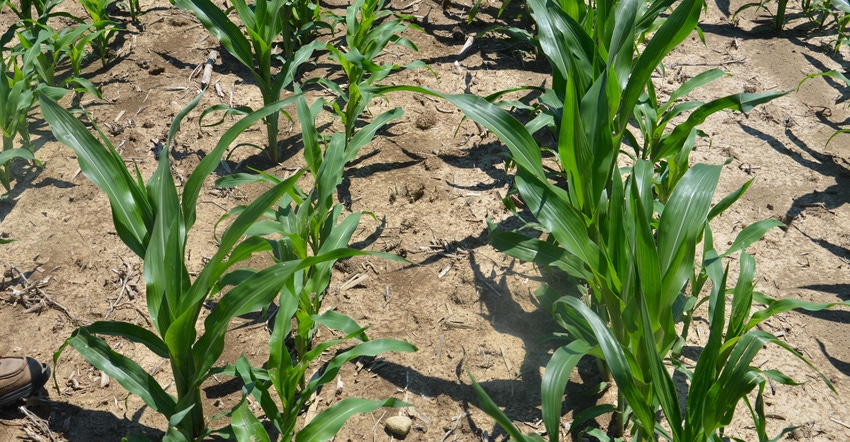May 29, 2017

What are the effects of late planting in corn?
A long time ago, studies conducted by Sherret Chase and myself demonstrated that there was a strong relationship between relative maturity of corn hybrids and number of leaves per plant. Chase was a colleague who worked with me at the time.
Earlier-maturing hybrids have fewer leaves compared to later-maturing hybrids. Remember, the purpose of a corn plant is to produce mature progeny, or seeds.
Bob Nielsen of Purdue University and Peter Thomison of Ohio State University have shown that the same hybrids planted late require about 200 fewer growing degree days to reach physiologic maturity than if they are planted earlier. But they yield less.
Growing degree days is a system agronomists use to measure heat units that accumulate each day and during the season. If you know the number of GDDs that have accumulated since planting and know planting date, you can estimate stage of growth of corn plants in the field without physically seeing them.
Plant adjustments
So how do plants emerging from later-planted seed make adjustments?
If we put all of the information together, what plants are doing is hurrying to produce seeds. So they develop fewer leaves and sacrifice some kernels that would add to yield, all to make sure they have mature progeny that can germinate and prosper.
Plants aren’t worried about grain yield. Their goal is to produce mature offspring that can survive, grow and prosper, just like any other species. They don’t know that you’re going to take their seed to the elevator. Of course, they also don’t know that if their seed were planted, it wouldn’t be productive because it would begin to separate out into plants resembling the parents.
How do corn plants know they need to hurry up and reduce their number of leaves so they can mature faster? It may have to do with day length.
Are the plants really that smart? I don’t know about their intelligence, but Mother Nature has provided different methods of survival to various species. Remember, the purpose of every living being is to propagate and produce as large and as healthy progeny as the environment permits.
Take-home point
This article is timely this year because some people were able to plant early in April. Then, much like a year ago, rainy, cool weather set in. A large amount of corn was planted in the last half of May.
So what should you do if you have to plant in late May or early June, either now or next year? To get maximum yield, I wouldn’t change to earlier hybrids, unless you have no access to dryers and have to let corn dry standing in the field.
If you’re going to keep on planting corn at such a late date, you might reduce planting population by about 10%, because stand establishment should be easier and more successful due to warmer temperatures.
Nanda is president of Agronomic Crops Consultants LLC. Email him at [email protected], or call him at 317-910-9876. He writes from Indianapolis. Tom J. Bechman contributed to this story.
Editor’s note: Seed Genetics-Direct, Washington Court House, Ohio, sponsors Corn Watch ’17.
About the Author(s)
You May Also Like






